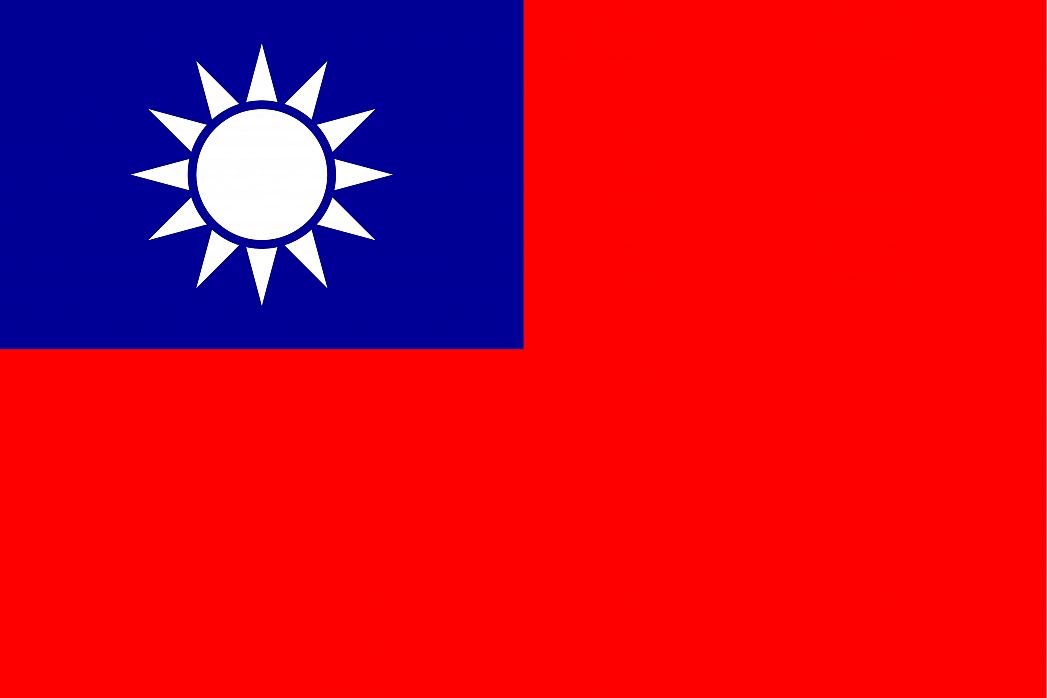Taiwan’s national flag is a red banner bearing a dark blue square on the top of the hoist side. The blue square has the sun at the center that is white with 12 rays radiating in all directions. The rays are also white and triangular in shape. In Chinese the flag is known as the blue sky with a white sun and red earth. The flag was adopted as the national flag of Taiwan on December 17, 1928. The flag is in the ratio of 2:3 and one fourth is blue and each sun ray is 30 degrees.
The blue on the flag represents liberty and nationalism, the red represents togetherness and the livelihood of the Taiwanese people, and the white is symbolic of democracy and equality. The blue corner and white sun are symbolic of the blue sky and the sun. The sun’s 12 rays symbolize the 12 months of the year and the 12 traditional Shichen, which is a traditional unit of time. The red part of the flag symbolizes the bloodshed by the revolutionaries in fighting to free Taiwan from dynasties and make it a Republic.
The flag was designed by two people, Lu Haodong and Sun Yat-Sen. The upper left side corner of the flag, which is the blue square having a white sun was initially named as the blue sky with a white sun and was Lu Haodong’s design. Lu was a Xinhai Revolution martyr, the revolution that fought for Taiwan to get rid of the dynasty form of governance and become a Republic. Lu voluntarily designed the flag, and it was meant to serve as the flag for the revolutionists. In 1906, Sun Yat-Sen, the first president of Taiwan decided to add the red part to the flag.
The flag’s initial version was made up of only the navy blue square with the white sun having 12 rays. The Xinhai Revolution used this flag during the Wuchang uprising of 1911. In 1906 Sun Yat-Sen added the red part of the flag. The red part of the flag is also referred to as the wholly red earth, giving form to the current flag.
This page was last modified on May 1st, 2018
More on Graphicmaps

Published on 2019-11-06
What is a Trade Embargo?

Published on 2019-11-04
Which Two Countries Used to Have the Same Flag?

Published on 2019-09-16
What Is the Only Two-Sided State Flag?

Published on 2019-09-16
Which Country Flag Looks Like the Texas Flag?

Published on 2019-08-29
Flags That Resemble the US Flag

Published on 2019-08-20
